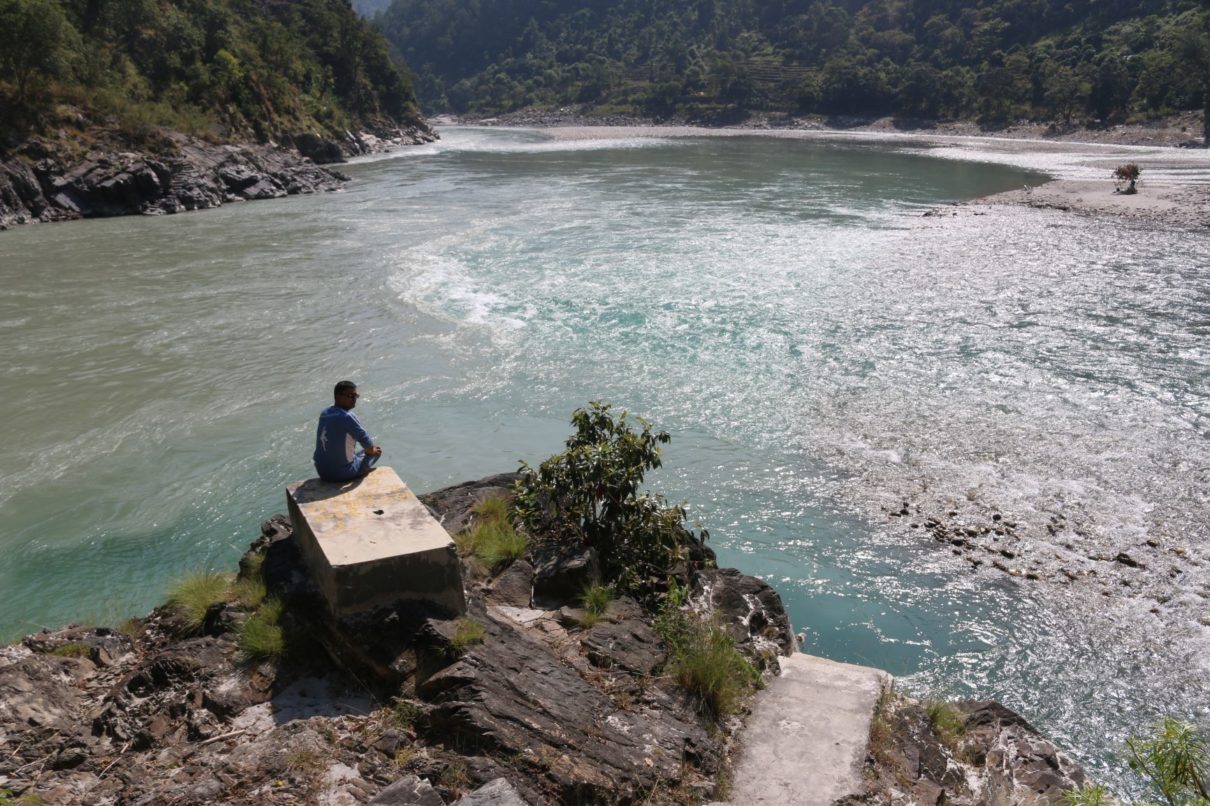For fire from gas leakages, Prakash Pandit, chief of Kathmandu Fire Brigade, says the best method is to wet a blanket and tie it over the cylinder or the point of leakage. Fire breaking out from oil while cooking is also common. In that case, Bhattarai says, the first thing to do is to cover the utensil with a lid. “In both of these methods, our primary goal is to minimize oxygen flow so that fire dies out on its own,” adds Pandit. In both cases, pouring water isn’t recommended.
But sometimes, these outbreaks go unnoticed, in which case, it might spread to a larger area. “We call that the developing phase, where those methods might not work,” says Bhattarai. Sometimes pouring sand on the source of fire and fire itself, or patting it down with a rug does the trick. “But that’s not feasible in all situations,” says Pandit. Fire extinguishers come in handy in these situations, which most households in Nepal don’t have. Even if they do, Pandit mentions that there have been incidents where the fire has escalated because people didn’t know how to use fire extinguishers. Besides managing the outbreak, it’s also necessary to call fire brigades, just in case the fire doesn’t stop spreading. “If one can’t put it out within the developing phase, then the only thing to do is get everyone out to a safer environment and wait for fire trucks to arrive,” he says. But then that poses another problem. Mohan Chaudhary, a Kathmandu-based firefighter, says that reaching the site on time has always been challenging, especially in urban areas. “Fire outbreak is an incident where every second counts, but we lose a lot of time starting from the phone call itself,” he says. Majority of phone calls in case of fire outbreaks go to the police station. Bhattarai says it’s because a lot of people don’t know the toll free number for fire brigades. “We lose around five-six minutes when that happens since police officers take necessary details and only then relay the message to respective fire engine stations,” says Chaudhary. Also, the emergency number isn’t easy to access. When you make a call to it from a cell phone from any part of the country, it goes to the Kathmandu Fire Brigade, says Bhattarai. For Kathmandu, Lalitpur, and Bhaktapur, the call goes to the nearest fire station if made from a landline. Once fire brigades are on the move, there’s a risk of being stuck in traffic. “Although police officers are on standby to provide easy passage, sometimes the traffic is way too heavy for them to clear it,” says Chaudhary, adding that, in many instances, this has delayed them from reaching the location as quickly as possible. Finding the right location is another problem. Since Nepal doesn’t have a proper Global Positioning System (GPS), navigating solely depends on how the locals describe the area. “They mention a landmark even when the site is further away from it,” he says. Once they were told the fire outbreak was in Lagan Chowk in New Road but there was no sign of fire when they reached the location. “We asked around and no one knew about it. Turned out, the fire had broken out some distance away from the location we were given,” he adds. This made them wander about for a few crucial minutes. In such cases, Chaudhary says it would be helpful if someone from the community were to come to the given location in order to help them reach the site without losing valuable time. Despite reaching the site on time, Pandit says that sometimes fire brigades are unable to get close to the outbreak due to narrow streets. “Although the Kathmandu Metropolitan City office has started to install fire hydrants on narrow streets to enable water pumps to reach difficult sites, it hasn’t been installed everywhere,” he says. Even if the streets are accessible, sometimes roads are blocked with sand or bricks because of construction. Recently, in April 2023, when fire broke out at a garment factory at Bafal, Kathmandu, Chaudhary says they lost around 10-15 minutes in removing the heap of sand on the road. “We were informed late and the fire was roaring by the time we got there,” he says. It took them nearly 24 hours to put the fire out. Everything inside the building was burnt to dust and a security guard lost his life. Bhattarai claims there is no knowledge of fire safety in Nepal. Bishnu Prasad Joshi, division head, Disaster Management Division at Kathmandu Metropolitan City office, agrees with him. He says the only way to minimize casualties from fire outbreaks is to make people aware of managing as well as preventing fire from breaking out in the first place. That includes teaching them the importance and use of fire extinguishers. “We have been working on several awareness programs in coordination with various wards, firefighters and organizations,” he says. Joshi believes it has been effective to some extent. He mentions that the locals were able to control a fire outbreak at a cafe in Chappal Karkhana, Kathmandu. “We returned midway after finding out that the fire was under control. This has happened several times in the past,” says Joshi. He adds that they aim to encourage every household to get at least one fire extinguisher in case of emergencies. For now, the metropolitan office has been assisting ward offices with fire extinguishers to be distributed to police stations, organizations, and clubs in their community. “That’s because even if fire trucks are on their way, these authorities can assist locals with outbreaks before firefighters arrive,” he says. Dhruba Bahadur Khadka, spokesperson, National Disaster Risk Reduction and Management Authority (NDRRMA), says that they have prepared a portable fire kit that can reach areas without road access. It includes around 20 tools that can be used depending on the intensity of the outbreak. “The price starts from Rs 100,000 and every ward can and should invest at least that much,” he says. Khadka adds that firefighters in Nepal also need additional training. Chaudhary and Bhattarai agree. The NDRRMA has been working on preparing a new syllabus for firefighters. The idea is to keep them updated about the new technologies that are being used. “We trained some officials using the draft prepared in order to analyze their practical implementation. The syllabus requires some amendments and we are working on that,” he says.











